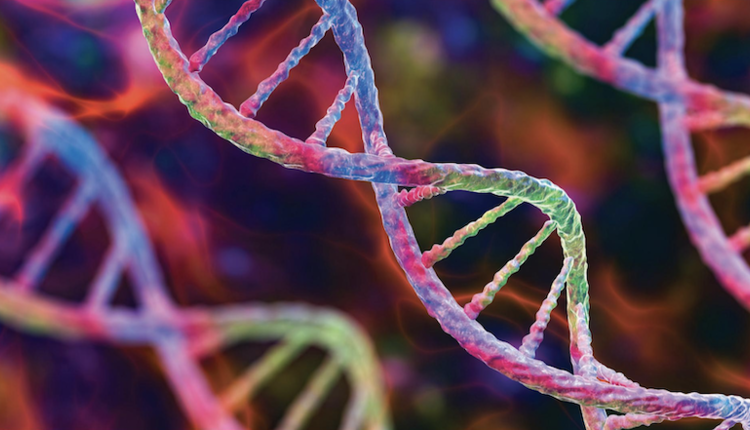
Search online or through social media feeds and a variety of fad diets and varied fitness plans are available, all purporting to be the best. Some backed by research, others by testimonials. With the advent of genetics, we can have a deeper and more accurate understanding of the body’s unique needs. Genetics is a paradigm shift in how we understand health, fitness and personalized medicine. This innovation changes what is possible for those seeking to reach their fitness potential.
Genetics offers precision in key areas that affect how the body operates and responds to food, lifestyle, stress, toxins and exercise. It acts much like an owner’s manual by helping us understand specific needs in areas such as metabolism, hormone health, diet requirements and food allergies, vitamin needs, our ability to handle stress, mental health and brain chemistry and what type of exercise is ideal for each person’s unique makeup. It helps us all to ask the question, ‘What is the ideal environment my DNA was meant to thrive in and how can I create it?’
Looking and feeling our best is complicated, and there are many processes that influence our ability to achieve (or surpass) our goals. Thus, various strategies can be employed, personalized to our genetic makeup that can enhance genetic expression, improve function and help us achieve our genetic potential and access the health we deserve. Here are just a few highlighted areas to consider:
Carbohydrates: Question to consider: What type of carb is my body designed to consume and in what quantities? The TCF7L2 gene controls your body’s ability to manage carbohydrates effectively. It is associated with abnormal insulin production especially when consumption of whole grains is low. Certain variants of this gene will cause sugar to spike with minor intake of refined sugar or lack of fiber, leading to rapid weight gain and increased risk of type II Diabetes.
Those with challenges in this area should consider testing glucose and insulin regularly. They are more suited to eat high-fiber, low-glycemic foods rich in whole grains such as brown rice, oats, quinoa and buckwheat. Of special note, many patients with this genetic variant that are avoiding gluten (sometimes unnecessarily) may be more susceptible to problems due to a tendency for inadequate insoluble fiber intake. (Most gluten-free patients are not meeting the daily requirements for fiber, which can impact the intestinal microbiome and further lead to insulin resistance according to recent studies). Knowing our genetic blueprint can help us stop guessing what diets are best and gain insights into how we were meant to eat.
Vitamin D status: Do we need ‘extra’ Vitamin D? The CYP2R1 gene produces Vitamin D Hydroxylase, an enzyme that converts vitamin D to its active form, 25- hydroxyvitamin D, in the liver. The GC gene produces a protein that helps maintain vitamin D levels within the blood. The VDR gene encodes the Vitamin D Receptor. All these genes control the status of Vitamin D in the body, and deficiencies and/or imbalances in Vitamin D metabolism impact mood, energy, hormones, immunity and bone health to name a few. Our bones provide structure and support for our nervous system, organs and muscles. Our bones are constantly being built up and broken down in a process called remodeling, which is vital to keeping our bones strong and healthy. Various types of exercise, including balance training, weight-bearing aerobic activity, and strength training are important to ensure that bone remodeling is occurring properly. By looking at genes that influence our Vitamin D status, we can get a better understanding of our risk for bone loss, as well as depression, immunity and susceptibility to infections. Various types of exercise have been shown to optimize our bones’ strength (resistance to fracture), boost mood and improve immunity. If an individual has specific variations in Vitamin D status, sunlight, Vitamin D-rich foods or high-dose supplementation may be helpful — and getting your blood levels of Vitamin D routinely checked is encouraged.
Recovery: What can I do to optimize my recovery from a hard workout? All exercise, from weight-training to running, causes “good damage” to muscle fibers, and rest between exercise sessions is required for our muscles to be able to properly strengthen and rebuild. Everyone is unique, and our genetics play a significant role in regulating post-exercise inflammation and fatigue. For understanding how adept our bodies are when it comes to exercise recovery, we can look at genetic markers associated with inflammation. Everyone has inflammation and free-radicals produced when they exercise, but some people can clear that away quicker than others. If, for example, our genes tell us that our body is quick to produce an inflammatory response and potentially slow at clearing it, we may find benefit from taking longer breaks between sets, or we may find that natural products and antioxidants such as N-acetyl cysteine, curcuminoids, green tea or Omega 3 fatty acids can modulate the inflammatory process and get recovery started quicker. Understanding if we carry genetic variants within the IL6, IL6-R, CRP, TNFalpha and SOD2 genes can help figure out how long it takes for our body to recuperate and can be key to preventing injury and building an optimal exercise regimen.
Motivation: Sustainable training programs require a strategy, not willpower. Interestingly, genes not only influence structural aspects of our bodies like our bones and muscles but can also influence behavior. While some individuals actually have a natural inclination to want to exercise — getting more pleasure from exercise and perceive exercise as requiring less effort — others have a natural inclination to sit on the couch and eat potato chips. Understanding motivation tendencies allows us to design an exercise plan that will work with, rather than against, our intrinsic motivations.
Genes that encode the Leptin Receptor (LEPR) and Brain-Derived Neurotrophic Factor (BDNF) have both been shown to influence exercise motivation and response to exercise, and understanding genetic variations in these genes can help us better understand ourselves. While most adults know from experience whether they are motivated to exercise or not, it’s interesting to see what our genes have to say about it. Genes impact various aspects related to physical fitness and can help us determine the best exercise regimen. Our genes can also help us understand susceptibility to injury; how quickly we are able to recover after a workout, the impact of exercise on managing Type 2 Diabetes, pain tolerance, an inherent inclination towards exercise and bone health profile. These are just a few examples on how genetic testing has changed our approach to fitness and what will work best for you and your clients.
Nicole Arseneau, founder of Innerstrong Fitness, has transformed her personal health journey into a mission to empower women over 40. Utilizing her scientific background and fitness expertise, Nicole's unique Empower, Balance, Thrive program integrates nutrition, mindset training, and functional medical testing to pinpoint weight loss challenges. This targeted approach helps busy professional women build lean, healthy bodies without sacrificing daily commitments. Stay connected with Innerstrong Fitness on Facebook and follow Innerstrong on Instagram for daily inspiration.









